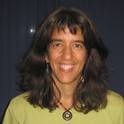Presentation
How do we know about Earth's history? Constructing the story of Earth's geologic history by collecting and interpreting evidence based scenarios.
EGU General Assembly Conference Abstracts
(2013)
Abstract
Beginning in 2003, faculty from Western Washington University, Skagit Valley Community College, local public school teachers, and area tribal college members created an innovative, inquiry based undergraduate geology curriculum. The curriculum, titled "Energy and Matter in Earth's Systems," was supported through various grants and partnerships, including Math and Science Partnership and Noyce Teacher Scholarship grants from the National Science Foundation. During 2011, the authors wrote a geologic time unit for the curriculum. The unit is titled, "How Do We Know About Earth's History?" and has students actively investigate the concepts related to geologic time and methods for determining age. Starting with reflection and assessment of personal misconceptions called "Initial Ideas," students organize a series of events into a timeline. The unit then focuses on the concepts of relative dating, biostratigraphy, and historical attempts at absolute dating, including uniformitarianism, catastrophism, Halley and Joly's Salinity hypothesis, and Kelvin's Heat Loss model. With limited lecture and text, students then dive into current understandings of the age of the Earth, which include radioactive decay rates and radiometric dating. Finally, using their newfound understanding, students investigate a number of real world scenarios and create a timeline of events related to the geologic history of the Earth. The unit concludes with activities that reinforce the Earth's absolute age and direct students to summarize what they have learned by reorganizing the timeline from the "Initial Ideas" and sharing with the class. This presentation will include the lesson materials and findings from one activity titled, "The Earth's Story." The activity is located midway through the unit and begins with reflection on the question, "What are the major events in the Earth's history and when did they happen?" Students are directed to revisit the timeline of events from the "Initial Ideas" activity at the beginning of the unit. After the review and reflection, students collect and interpret six evidence based scenarios dealing with the absolute ages of various rocks, including moon and meteorite samples, microfossil data, banded iron formations, plant and animal fossils, tectonic movement, extinction events, and human migration. The scenarios are dated and allow students to have a more complete view of geologic time. Using this more complete view, students are prompted to revisit and reorganize the timeline from the "Initial Ideas." By the end of the lesson, students will demonstrate a more complete understanding of the age of the Earth, the geologic time scale, and the role of biotic factors in Earth's systems.
Keywords
- Geologic time,
- Geology curriculum
Disciplines
Publication Date
April, 2013
Location
Vienna, Austria
Citation Information
Ruthford, S., S.M. DeBari, S. Linneman, 2013, How do we know about Earth's history? Constructing the story of Earth's geologic history by collecting and interpreting evidence-based scenarios, EOS2 poster session, European Geosciences Union General Assembly 2013, Vienna Austria 07-12 April 2013.
